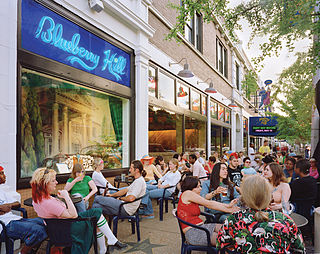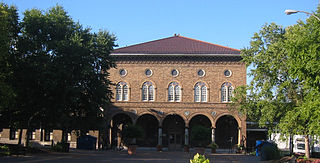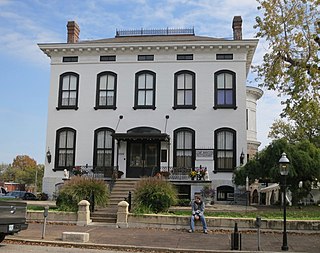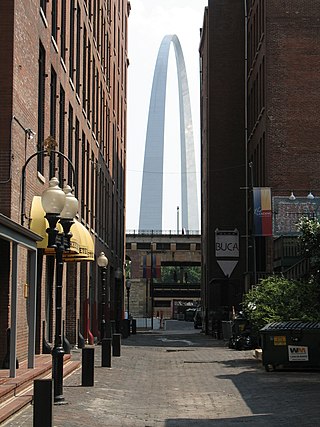Museums and attractions


The Saint Louis Art Museum, located in Forest Park, houses a variety of art media, ranging from ancient artifacts to contemporary exhibits. Other art museums in St. Louis include the Pulitzer Arts Foundation, located in a building designed by the architect and Pritzker Prize winner Tadao Ando, and the Contemporary Art Museum St. Louis, a non-collecting contemporary art museum. [1] Universities in the area also operate museums of art, such as the Saint Louis University Museum of Art and the Kemper Art Museum at Washington University in St. Louis.
The Missouri History Museum, which is located in Forest Park and affiliated with the Missouri Historical Society, offers exhibits on the history of St. Louis. Current exhibits include the 1904 World's Fair, Seeking St. Louis, and Gateway to Pride. The Museum of Westward Expansion, located below the Gateway Arch, details the history of exploration and settlement of the American West. Other local museums include the Eugene Field House and the Campbell House Museum, the latter of which operates as a house museum focused on the Victorian era. The St. Louis area is also home to the National Museum of Transportation, which preserves railroad and other transportation equipment, and the National Blues Museum.
The Gateway Arch, part of the Gateway Arch National Park (known as the Jefferson National Expansion Memorial until 2018), is a popular tourist attraction in downtown St. Louis. Also downtown is Laclede's Landing, a restaurant and nightclub area along the Mississippi riverfront. Nearby, St. Louis Union Station is a renovated railroad terminal that includes retail shops and a luxury hotel, and the privately-owned City Museum is a playground-like funhouse attraction located in the Washington Avenue Historic District. The Lemp Mansion, former home of the ill-fated Lemp family, is open to the public as a haunted house, restaurant, and bed and breakfast. Six Flags St. Louis is an amusement park located in Eureka, Missouri.
Notable museums are also located in surrounding cities. The Delmar Loop, located in University City, just west of the St. Louis city line, is a popular entertainment, cultural and restaurant district, voted one of the "10 Best Streets" in the nation by the American Planning Association. The Butterfly House of the Zoo is located in western St. Louis County in Chesterfield.
The Magic House, St. Louis Children's Museum, is located in Kirkwood west of the city.
The Jefferson Barracks Telephone Museum has an extensive collection of telephones manufactured from the 1900s through the 2000s. Collections include a working Central Office Step Switch, military telephones from WWII through the Vietnam War, hundreds of pieces of telephone-related equipment and tools, a telephone pole complete with climbing equipment, hundreds of pieces of telephone-related memorabilia from the 1880s through the 2000s, a large variety of novelty telephones, a special portable switchboard set up when U.S. Presidents Carter, Ford, Nixon, and Johnson were visiting St. Louis, and a sculpture of Alexander Graham Bell and history of the invention of the telephone. [2] The self-guided, accessible museum has many hands-on, how-things-work displays. [3]
Cahokia Mounds, located near Collinsville, Illinois, holds the ruins of the 12th-century city of the ancient Mississippian aboriginal culture. Its Monk's Mound is the largest prehistoric earthwork in North America and one of more than 60 mounds remaining. This was one of the first eight sites in the US listed as a World Heritage Site by UNESCO. Similar Mississippian mounds gave St. Louis its nickname "Mound City", but most were leveled off and used for fill during development in the 19th century.














